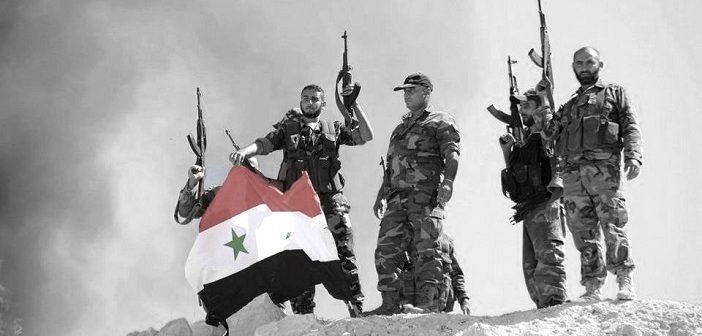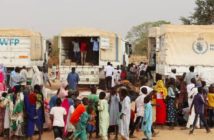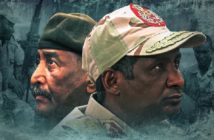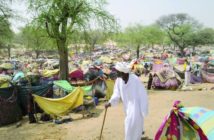Al-Jaish al-Fatah (the Army of Conquest – JaF) is the rebel coalition force that in early August of 2016 broke the regime’s siege of eastern Aleppo. The grouping has played a key role in shaping the future of the province of Aleppo and has risen to become the biggest adversary of the Syrian Armed Forces in northern Syria.
To understand the power and the potential of JaF it is imperative to go back to its roots, when Idlib, the second provincial capital after Raqqa, fell to rebel forces in 2015.
In spring, the Syrian army was stretched thin desperately trying to follow Bashar al-Assad’s objective to have the majority of the population under his control. The town of Idlib which lies south-west of Aleppo on the road to the Alawite mountains of Lattakia, played a key role in that strategy. Not only did it have a pre-war population of 165.000, but as the war dragged on, and its countryside fell to the rebels, many refugees found safe haven in the city, fleeing either from the rebels, or Bashar’s punitive barrel bombs. In March, the Syrian Armed Forces and local militia only controlled a small corridor stretching from the Lattakia mountains, through a town called Jisr al-Shugur, and finally reaching Idlib itself.
As this region is overwhelmingly Sunni, and with the memory of Hafez al-Assad’s brother Rifa’at’s massacre of civilians of 1980 in Jisr al-Shugur, all the pieces fell in place for the rebels to try to seize the region…
And so Jaish al-Fatah was born.
The fall of Idlib
Although preparations were ongoing since late 2014, JaF officially appeared on the 24th of March 2015, and became the first rebel coordination center, which has been capable of launching major offensives since the start of the war.
At the foundation JaF had 8 groups listed below in order of their numerical strength: Ahrar al-Sham (Salafist); Jabhat al-Nusra (Wahhabi, Salafist, linked to al-Qaeda – recently renamed to Jabhat Fatah al-Sham, designated terrorist organization by the West); Jund al-Aqsa (Wahhabi, Salafist – ties to the Islamic State, designated “Specially designated Global Terrorist entity” by the West); Faylaq al-Sham (Islamist -strong links with Muslim Brotherhood); Ajnad al-Sham (Islamist – supported the Geneva peace talks); Liwa al-Haq (Salafist); and Jaish al-Sunnah (Salafist).
The vast majority of soldiers in JaF come from the first two groups, and its components range from supporters of what is called radical Islam in the West, to others invited to numerous peace negotiations in Switzerland and elsewhere, like Ahrar al-Sham. There were also other FSA groups loosely allied with JaF to whom the US provided TOW anti-tank missiles and which were tasked with securing the rear of the attack. These groups chose not to officially enter JaF, as it would mark the end of their western backing. Jaish al-Fatah’s numerical and weaponry strength along with their first of its kind coordination center paid way for the most grandiose rebel offensive since the start of the civil war.
The capture of Idlib by the rebels went relatively quickly, just in four days, in late March. Not only was the population residing there historically neglected by the regime and hostile towards it, but also because of the fast retreat by the Syrian army (Syrian Arab Army – SAA).
After the checkpoints in the countryside fell to JaF forces the SAA retreated from Idlib, without putting up a fight for it and basically acknowledging that not only were they outnumbered and outmatched, but morally and ideologically inferior to the rebel onslaught.
The Syrian army regrouped in the strategically much more important town of Jisr al-Shugur which protects the Lattakia mountains. The Alawites of Lattakia and Tartous realized that it was imperative for their security that the town stayed in regime hands as it protectstheir heartland.
Mounting the pressure
The merely twenty days between the battle for Idlib and that of Jisr al-Shugur wasn’t enough for the SAA and some National Defence Forces to adequately prepare themselves, and their incapability in this regard showed that the civil war won’t be won with the regular forces of Bashar al-Assad. The rebel offensive on the Sunni town Jisr al-Shugur was supplemented with more radical groups like the Turkistan Islamic Party in Syria whose mother organization is designated as a terrorist organization by the West.
This coordinated attack showed once again the difference of capabilities of an organized rebel offensive against badly equipped and demoralized Syrian Army forces. Even though the regime decided to put up a real fight trying to hold the town, the rebels with tens of Jabhat al-Nusra suicide bombers and vast numerical and motivational advantage sent the Army and their supporters fleeing. Their media arms later published videos showing civilians caught in the cross fire while trying to reach safe territory.
Unfortunately for Assad it wasn’t the fast retreat of his forces that was embarrassing, but also the way it was done. Hundreds of regime soldiers, civilians, and injured people got caught and encircled in the National Hospital of Jisr al-Shugur. With no relief in sight andperpetual suicide attacks, the hospital withstood for an astonishing 27 days, with images going online showing relentless shelling and suicide bombers driving cars into the compound. Retreated regime forces managed to talk to Bashar al-Assad over the phone begging him to send ammunition so that they could relieve the hospital, and even though several missions were sent, none reached the besieged people, who eventually broke out of the hospital and reached regime lines. The state media tried tomake this appear as a big propaganda victory, but it is unknown how many died during their escape – probably more than survived.
In July, after their gains in Jisr al-Shugur, the rebel forces attacked and reached major victories in the Ghab Plain, just to the east along all of the Alawite mountains, breaking through lines in fast pace, and looked to score perhaps the biggest strategic victory since 2013.
The rebel coalition spearheaded by Islamists, supported by the US-vetted FSA groups,showed not only to Damascus, but also to the major world powers, that together in a coalition, they could defeat the Syrian army. This prompted not only the Russian intervention but pushed Assad to invite and rely on local and international militias, which further dismantled the Syrian Arab Army and even more internationalized the conflict.
Bashar al-Assad gave a remarkable out of order speech in July 2015 at the height of the fight over the Ghab plain. After the usual promises he stated in interviews such asthe rebuilding and restoration of the “homeland” by the Syrian Arab Army, he went on acknowledging that his troops lack manpower. While not naming specifically the defeats in the Idlib province he nevertheless stated that “it was necessary to specify critical areas for our armed forces to hang on to” later he admitted that “there is a lack of human resources… Everything is available [for the army], but there is a shortfall in human capacity”.
To be so open in front of the entire country was brave, but it also pointed out that the war was about to change radically.
Foreign and local interventions
The Russian intervention to protect its only remaining ally in the middle-east was decisive in short-term to end the series of defeats Assad had suffered since the beginning of 2015. Airplanes, helicopters and artillery all in coordination with the Syrian Army stabilized the front for Assad in the Idlib province, but because of the lack of manpower and motivation, the region is not easily recaptured.
Reacting to the formation of JaF, and thinking long-term, the regime accelerated the disintegration of the army, into smaller militias that Bashar couldn’t control as much as the regular armed forces, but which proved to be more effective on the battlefield. Bashar al-Assad’s cousin, the wealthy Rami Makhlouf who owns the Bhutan foundation (which gets aid from the UN) funded several new militias, which have appeared notonly in the regime stronghold Lattakia region but all across the country. As the pay in these militias is higher and joining them exempts young Syrians from the compulsory military service, these fighting groups are a lucrative alternative.
The uprising of local militias in Aleppo province, sometimes working out of Damascus’ complete control, wasn’t the only consequence of the successful rebel offensive of Idlib. Starting in the summer of 2015, thousands of Shia Iraqi and Afghan soldiers supported by the Islamic Revolutionary Guard Corps (IRGC) started flocking to Aleppo, where heavy fighting took place over who could encircle the city first. Much like in Idlib there is only a thin corridor linking Aleppo to regime held territory in central Syria, and over the years the town has become the main strategic and ideological battle ground, or as many experts say: who takes control of Aleppo wins the war.
The addition of foreign Shia militias along with growing Russian bombings took the pressure off the Syrian Army throughout late 2015 and early 2016. With breathing space, Bashar’s generals mobilized one of the only remaining group with offensive capabilities and which is still under central control: the elite militias of the “Tiger Forces”. They were tasked with encirclingeastern Aleppo from the northand cutting off the rebels.
With a lot of back and forth it was a slow offensive, which usually started with artillery barrage to weaken rebel lines, followed by ground attack and if the army couldn’t gain ground, the artillery and air force would attack again in the same area to give defending forces no rest. It is safe to assume that Russian ground advisors played a formidable part, and gave the army a tactical advantage that it didn’t have before. The defending rebels showed no sense of unity, blamed each other, and were ultimately defeated with great losses and had to retreat from the Castello Road, thus the government and its allies encircled Aleppo.
The resurge of Jaish al-Fatah
As the territories along the long fought-over Castello road (named after a nearby restaurant) consists of farms and open ground, the rebels were easy picking for the Russian and Syrian air force, therefore they had to find another way to break the siege of Aleppo. Jund al-Aqsa, another al-Qaeda affiliate closely linked with the Islamic State, joined the JaF coalition which launched a surprise attack in the south of Aleppo aiming at breaking through government (Related to the context, “government forces” can also mean allied local and foreign militias alongside the Syrian Arab Army)- held lines to reach their belligerents. The goal of the offensive was to advance through apartment complexes (where many refugees were living) and the Aleppo Military Academy so as to be ableto take cover from airstrikes. The rebels named a part of the attack “for the martyr Ibrahim el-Youssef” who is remembered for having killed around 70 Alawite army cadets in the Academy in 1980 and almost tipping the country into a civil war.
The JaF coalition with huge manpower advantage advanced slowly, but surely forced the government to withdraw. The Syrian generals along with Russian advisors showcased once again their new successful tactic, and allowed the retreat of their forces realizing that they were outnumbered, but at the same time bombarded the lost territory with heavy artillery and airplanes. They didn’t try to fight to hold their positions until the end, instead thinking long-term, they tried bleeding out the rebels. JaF managed to break through the siege and create a 1.5 km wide salient to reach into eastern Aleppo, but they only scored a big a propaganda victory.
The regime continued to have fire control over the area, and the rebels were unable to enlarge the pocket, nor did they have access to concrete roads leading into the city.For artillery and airpower, it was easy to concentrate on such a small territory and it was only a question of time when they would exhaust the rebels. According to reports during the two-week South-Aleppo offensive by JaF, they lost more than 500 soldiers which is a huge number even for them. By the beginning of September, the regime regrouped its elite forces to the area, launched a counter attack and relatively quickly and easily closed the gap, prompting the new shaky cessation of hostilities.
The new cessation of hostilities and the quick end of it
The success of the Russian-American peace deal was improbable, and they probably knew it.
To imagine that the US could manage to separate Al-Nusra and Jund al-Aqsa, two hard-core Salafist groups, from the rest of the rebel coalition who fought and died with them on the battlefield was a long shot. Even after the cessation of hostilities (CoH) started on the 12th of September Jund al-Aqsa and Nusra launched another attack on Aleppo, which the regime had to fight against. At the same time another semi-successful offensive was launched in the Hama countryside by Salafist groups all with the knowledge end blessing from the “moderate” rebels the US wanted to work with.
If that wasn’t enough for the CoH to fail, the coalition air attack on Syrian regime troops in Deir el-Zor made sure it would.
Syria’s probably most under-reported city, which lies inthe East, has a population of 230.000 citizens and has been encircled for two years by Islamic State forces holding one part of the town and its surroundings. The US explained the airstrike which killed more than 70 regime forces by stating that it wanted to strike IS forces, but the argument has many flaws.
Although the coalition has struck IS forces in that region weekly, they never did that to directly support the Syrian Republican Guard stationed there. That leaves us with two explanations: either the US wanted to strike on regime troops, or they wanted to help them.
Lastly on the 19th of September a Syrian state communiqué was made public, unilaterally declaring that the Cessation of Hostilities would end that evening at eight.
At about the same hour a long time delayed UN aid convoy to Aleppo was bombed, which sealed the final nail in the coffin for peace…
And will prolong the war, and continue the suffering of the Syrian people who have been through so much already.





